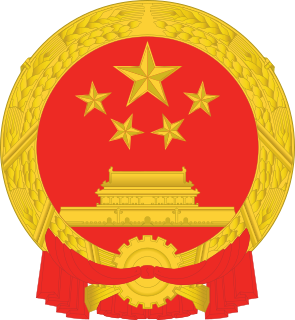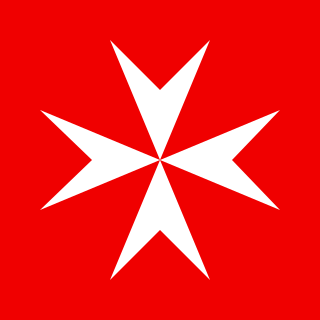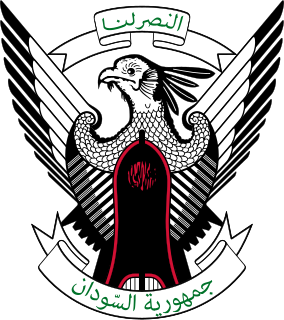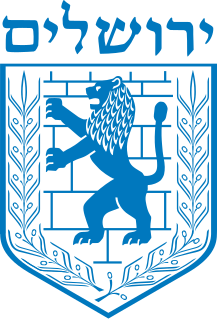
The hammer and sickle is a symbol meant to represent proletarian solidarity – a union between agricultural and industrial workers. It was first adopted during the Russian Revolution, the hammer representing workers and the sickle representing the peasants.

The flag of Hong Kong, officially the regional flag of the Hong Kong Special Administrative Region of the People's Republic of China, depicts a white stylised five-petal Hong Kong orchid tree flower in the centre of a Chinese red field. Its original design was unveiled on 4 April 1990 at the Third Session of the Seventh National People's Congress. The current design was approved on 10 August 1996 at the Fourth Plenum of the Preparatory Committee of the Hong Kong Special Administrative Region. The precise use of the flag is regulated by laws passed by the 58th executive meeting of the State Council held in Beijing. The design of the flag is enshrined in Hong Kong's Basic Law, the territory's constitutional document, and regulations regarding the use, prohibition of use, desecration, and manufacture of the flag are stated in the Regional Flag and Regional Emblem Ordinance. The flag of Hong Kong was officially adopted and hoisted on 1 July 1997, during the handover ceremony marking the transfer of sovereignty from the United Kingdom back to China.

The national flag of Turkey, officially the Turkish flag, is a red flag featuring a white star and crescent. The flag is often called "the red flag", and is referred to as "the red banner" in the Turkish national anthem. The current Turkish flag is directly derived from the late Ottoman flag, which had been adopted in the late 18th century and acquired its final form in 1844. The measures, geometric proportions, and exact tone of red of the flag of Turkey were legally standardized with the Turkish Flag Law on 29 May 1936.

The flag of Israel was adopted on 28 October 1948, five months after the establishment of the State of Israel. It depicts a blue hexagram on a white background, between two horizontal blue stripes. The Israeli flag legislation states that the official measurements are 160 × 220 cm. Therefore, the official proportions are 8:11. Variants can be found at a wide range of proportions, with 2:3 being common.

The flag of Ethiopia is the national flag of Ethiopia. It consists of a green, yellow, and red tricolour with the National Emblem, a golden pentagram on a blue disc, superimposed at the center. While the colors green, yellow, and red in combination held symbolic importance since at least the early 17th century, the modern tricolour was first adopted on 11 October 1897 by Menelik II, and the present flag on 31 October 1996.

The National Emblem of the People's Republic of China contains in a red circle a representation of Tiananmen Gate, the entrance gate to the Forbidden City, where Mao Zedong declared the foundation of the People's Republic of China (PRC) in 1949. Above this representation are the five stars found on the national flag. The largest star represents the Chinese Communist Party (CCP), while the four smaller stars represent the four social classes as defined in Maoism. The emblem is described as being "composed of patterns of the national flag":
...The red color of the flag symbolizes revolution and the yellow color of the stars the golden brilliant rays radiating from the vast red land. The design of four smaller stars surrounding a bigger one signifies the unity of the Chinese people under the leadership of the Communist Party of China (CPC).
—China Yearbook 2004

The Maltese cross is a cross symbol, consisting of four "V" or arrowhead shaped concave quadrilaterals converging at a central vertex at right angles, two tips pointing outward symmetrically.

The Emblem of Israel depicts a temple menorah surrounded by an olive branch on each side, with the word "Israel" written in Hebrew below it. While it is commonly displayed in blue and white, the emblem has appeared in alternative colour combinations depending on the use, such as on the Israeli Presidential Standard.

The Blue Sky with a White Sun serves as the design for the party flag and emblem of the Kuomintang (KMT), the canton of the flag of the Republic of China, the national emblem of the Republic of China, and as the naval jack of the ROC Navy.

The Jerusalem cross is a heraldic cross and Christian cross variant consisting of a large cross potent surrounded by four smaller Greek crosses, one in each quadrant. It was used as the emblem and coat of arms of the Kingdom of Jerusalem from the 1280s.

The Regional Emblem of the Hong Kong Special Administrative Region of the People's Republic of China came into use on 1 July 1997, after the transfer of the sovereignty of Hong Kong from the United Kingdom to the People's Republic of China.

The current national emblem of Sudan was adopted in 1985.
The Northern Ireland flags issue is one that divides the population along sectarian lines. Depending on political allegiance, people identify with differing flags and symbols, some of which have, or have had, official status in Northern Ireland.

The emblem of Kuwait was created in 1962 and it consists of the shield of the flag design in color superimposed on a golden falcon with wings displayed. The falcon supports a disk containing a boom sailing ship, a type of dhow, with the full name of the state written at the top of the disk.

The emblem of Jerusalem is a standalone official symbol that is also used on the flag of Jerusalem. It consists of a shield with the Lion of Judah flanked on either side by olive branches, all superimposed on a stylized background representing the Western Wall. Above the main display is the Hebrew-language word for Jerusalem.

The national flag of Ireland, frequently referred to in Ireland as 'the tricolour' and elsewhere as the Irish tricolour is a vertical tricolour of green, white and orange. The proportions of the flag are 1:2.

The flag and coat of arms of the Sovereign Military Order of Malta display a white cross on a red field, ultimately derived from the design worn by the Knights Hospitaller during the Crusades.

Albanian heraldry is the use of heraldic symbols in Albania. The earliest form of Albanian heraldry is from the late 12th century, with the creation of the first Albanian medieval country, the Principality of Arbanon in 1190. During the 13th to the 15th century, a great number of medieval Albanian noble families had at their coat of arms the symbol of eagle like the Kastrioti, Muzaka, Arianiti, Dukagjini, but the most prominent being the Kastrioti's coat of arms, having a black double headed eagle, which became a national symbol of the Albanians during Skanderbeg's reign in the 15th century, as well as the official national flag of Albania from 1912.


















